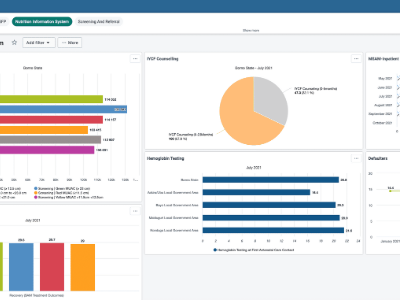This module is about the essentials of DHIS2. It links to an external course hosted on the Open edX platform and provides an opportunity to use the system to aggregate data for a nutrition specific instance.
Learning objectives
By the end of this module, you will be able to:
- Describe how DHIS2 can be used to aggregate, analyse, review, and share data
- Describe the key concepts, building blocks, and terminology of DHIS2,
- Create pivot tables, charts, and maps to visualize data within DHIS2,
- Identify the initial steps to customize DHIS2 for aggregate data to meet the needs of a given country or organisation,
- Differentiate the mechanisms used for data capture within DHIS2 along with their main features,
- Follow the steps for aggregate reporting in reference to a Global Nutrition Cluster (GNC) specific instance.
Audience
This module is an intermediary-level course aimed at anyone who is interested in furthering their skills and knowledge in nutrition cluster coordination in humanitarian contexts, and who needs to coordinate and collaborate with the humanitarian architecture on this topic. It is part of the recommended learning path for national nutrition cluster coordinators aiming to progress to senior level roles.
Length
50 mins (+ approximately 20 hours external DHIS2 course)
Methodology
This course is composed of a single short self-paced animated module, including various examples and activities.
Structure
Introduction
Lesson 1: An Introduction to DHIS2 Fundamentals
Lesson 2: A Nutrition In Emergency Instance: Data Entry
Lesson 3: A Nutrition In Emergency Instance: Data Analysis
Suggested prior learning
There are no specific pre-requisites to do this module. However, having basic knowledge or prior experience of using data analysis tools (such as Microsoft Excel) is an advantage.
Contact details
For technical issues, you can contact https://www.nutritioncluster.net/Ask_question
